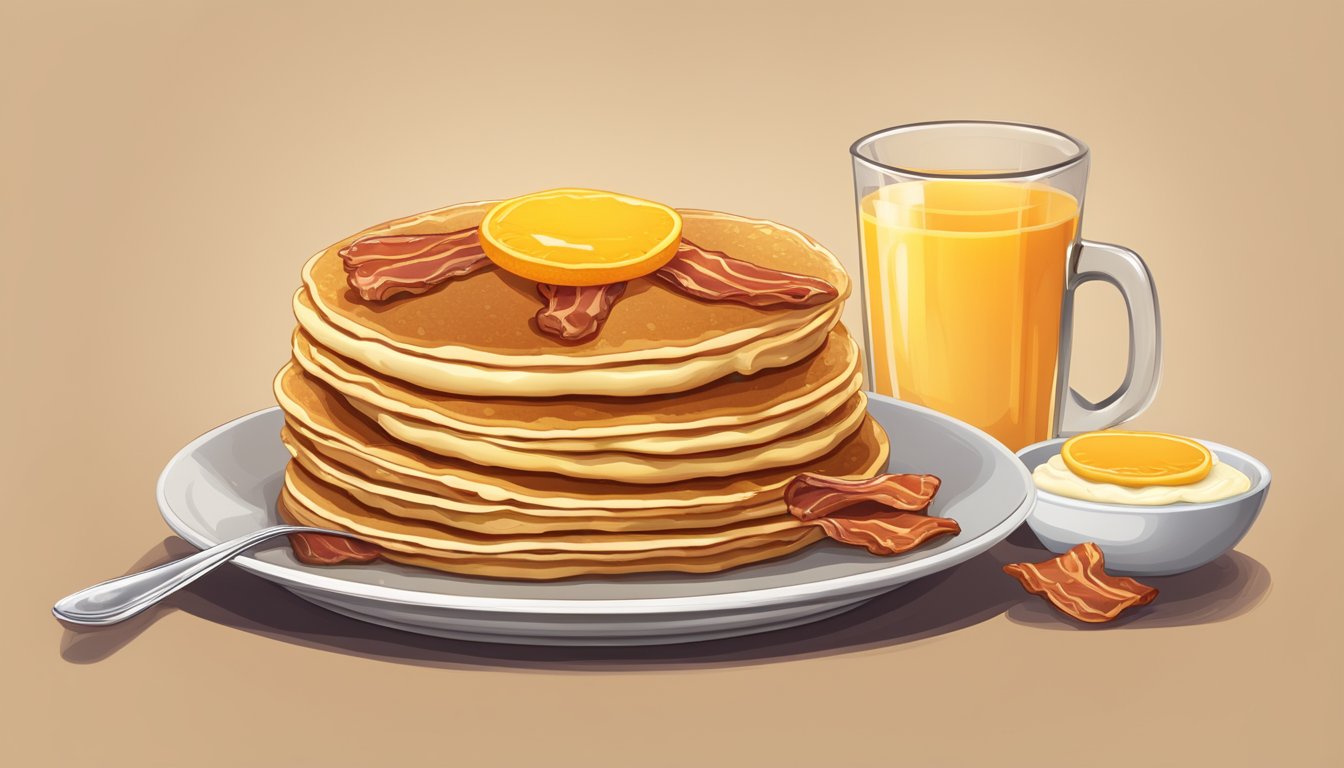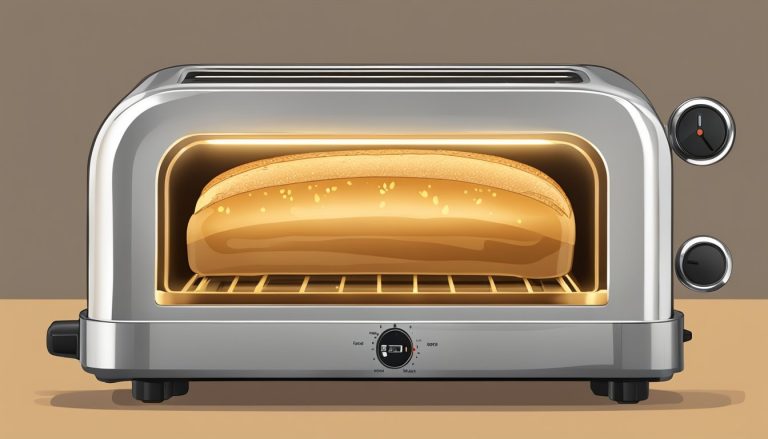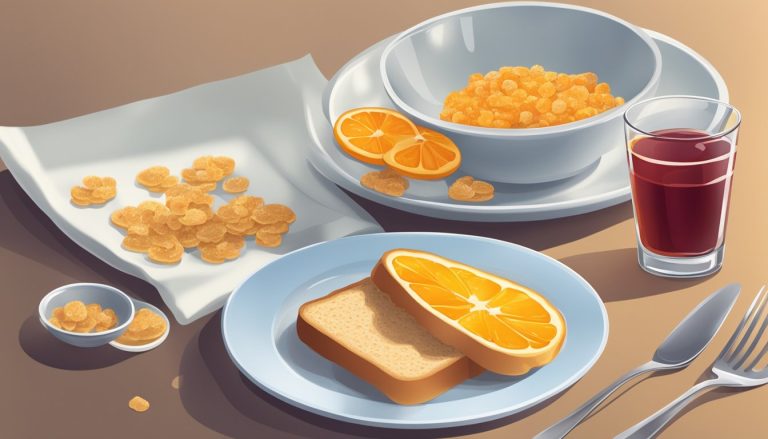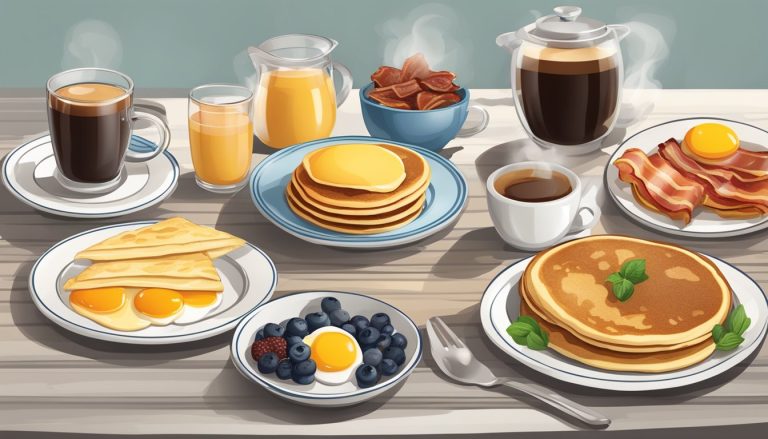Pancakes have been a beloved breakfast staple for centuries, with a history stretching back further than many might imagine. From ancient grains ground with primitive tools to the fluffy stacks we enjoy today, these circular treats have evolved alongside human civilization. Jack’s Pancake Platter pays homage to this rich culinary tradition, offering a modern twist on a timeless classic.
The pancake’s journey through time reflects the ingenuity of cooks who transformed simple ingredients into a versatile and satisfying dish. In medieval Europe, pancakes served as a pre-Lenten indulgence, allowing people to use up perishable items before the fasting period. This practical origin evolved into a cherished custom, with pancakes becoming synonymous with celebration and comfort.
Today, Jack’s Pancake Platter continues this legacy, serving up golden, fluffy pancakes that would make our ancestors proud. The addition of modern raising agents has perfected the light, airy texture that pancake enthusiasts crave. Whether topped with traditional maple syrup or adorned with contemporary flavors, each stack at Jack’s tells a story of culinary innovation and enduring appeal.
The Origins of Pancakes

Pancakes have a rich history spanning thousands of years, evolving from simple grain-based flatbreads to the fluffy breakfast staples we know today. This journey includes ancient culinary traditions and modern innovations.
Ancient Beginnings to Modern Adaptations
Archaeological evidence suggests humans enjoyed proto-pancakes as early as 70,000 years ago. In Iraq’s Shanidar Cave, researchers discovered that early humans mashed and soaked seeds to create flat patties. This primitive form laid the foundation for pancakes as we know them.
Ancient civilizations across the globe developed their own versions of pancakes. Greeks and Romans made flatbreads using wheat flour, olive oil, honey, and curdled milk. In medieval Europe, pancakes became a Shrove Tuesday tradition, using up rich ingredients before Lent.
The 19th century saw significant changes in pancake preparation. In 1824, the first American cookbook featuring a pancake recipe was published. By the 1930s, pre-made pancake mixes hit the market, simplifying the process for home cooks.
Jack’s Pancake Platter: The Early Recipe
Jack’s Pancake Platter emerged as a local favorite in the mid-20th century. The original recipe focused on creating exceptionally fluffy pancakes, setting it apart from competitors.
Key ingredients included:
- All-purpose flour
- Baking powder
- Salt
- Sugar
- Eggs
- Milk
- Melted butter
The secret to Jack’s fluffy texture lay in separating the egg whites and folding them into the batter. This technique incorporated air, resulting in lighter pancakes.
Jack’s also introduced buttermilk to their recipe, enhancing flavor and tenderness. This addition closely mimicked the tangy taste of traditional buttermilk biscuits, appealing to Southern palates.
Nutritional info wasn’t a priority in the early days, but Jack’s pancakes provided a hearty breakfast with protein, carbohydrates, and essential vitamins from milk and eggs.
Evolution of the Breakfast Menu

Breakfast menus have undergone significant changes over time, expanding beyond traditional morning fare to include diverse options throughout the day. Pancakes have played a central role in this evolution, appearing in various forms across different meal times.
Incorporation into Daily Meals
Pancakes transitioned from occasional treats to staple breakfast items in many cultures. Restaurants began featuring breakfast platters with pancakes alongside eggs, hash browns, and meats. Jack in the Box introduced its Jumbo Breakfast Platter, offering pancakes with scrambled eggs and side options. French toast and waffles also gained popularity as sweet alternatives.
Big breakfast sandwiches emerged as convenient on-the-go options. Egg whites became a healthier choice for the calorie-conscious. Restaurants expanded their kids’ menus to include fun pancake shapes and mini-sized portions.
Beyond Morning: Pancakes for Lunch and Dinner
Pancakes broke free from their breakfast-only status, appearing on all-day menus. Savory variations like potato pancakes and corn fritters became popular lunch options. Some eateries offered breakfast-for-dinner specials featuring pancake platters.
Ethnic influences introduced new pancake styles, such as Japanese okonomiyaki and Russian blini. Creative chefs incorporated pancakes into fusion dishes, blending traditional breakfast elements with lunch and dinner flavors.
Pancake houses expanded their hours, serving their signature items well into the evening. This shift reflected changing consumer habits and a growing appreciation for breakfast foods at non-traditional times.
Expansion of the Jack’s Platter

Jack’s Pancake Platter evolved from a simple breakfast offering to a diverse menu featuring both indulgent and health-conscious options. The expansion brought new flavors, ingredients, and nutritional considerations to cater to changing customer preferences.
From Simple Beginnings to Diverse Offerings
Jack’s initial pancake platter started with fluffy pancakes and basic toppings. Over time, the menu expanded to include savory options like the Santa Fe Skillet and Oklahoma Skillet. These skillets combine eggs, meats, and vegetables for a hearty breakfast.
The platter selection grew to feature sandwiches, burgers, and wraps. Popular choices include:
- Chicken Caesar Wrap
- Buffalo Chicken Wrap
- Veggie Burger
Sides evolved beyond hash browns to include:
- Garden Salad
- Greek Salad
- Cobb Salad
For those with a sweet tooth, Jack’s added milkshakes and cookies to complement their pancakes. The classic pancake platter remains a favorite, now enhanced with delicious syrup options.
Healthy Alternatives and Nutritional Milestones
Recognizing the demand for healthier choices, Jack’s introduced grilled chicken options and expanded their salad menu. The Garden Salad became a popular light meal choice.
Nutritional improvements included:
- Reduced sodium in sausage gravy
- Lower-calorie syrup alternatives
- Whole grain options for pancakes and wraps
Jack’s also began offering egg white substitutions and turkey bacon as leaner protein choices. These changes allowed customers to enjoy their favorite flavors while making more health-conscious decisions.
Vegetarian options expanded with the introduction of the Veggie Burger and meat-free salads. Jack’s commitment to diverse, nutritious offerings has helped maintain its popularity in a competitive breakfast market.
Jack’s Advertising and Market Reach
Jack’s Pancake Platter has invested significantly in advertising and expanding its market reach. The company employs a mix of traditional and digital marketing strategies to promote its fluffy pancakes and connect with customers.
Promotional Strategies for Maximum Impact
Jack’s utilizes eye-catching billboard ads featuring stacks of golden pancakes to attract drivers. TV commercials showcase families enjoying breakfast together, emphasizing the comfort food aspect. The company partners with local radio stations for sponsored segments during morning drive times.
Jack’s also leverages influencer marketing, collaborating with food bloggers and social media personalities to showcase its menu items. Seasonal promotions, like pumpkin spice pancakes in fall, generate buzz and repeat visits.
In-store promotions include loyalty cards offering a free stack after purchasing 10. Jack’s participates in community events and sponsors local sports teams to boost brand awareness.
Engagement through Ads and Social Media
Jack’s maintains an active social media presence across platforms. The company posts mouthwatering photos of pancake stacks and encourages user-generated content through hashtag campaigns. Contests prompt followers to share their favorite pancake toppings or breakfast memories.
Targeted online ads remind users about Jack’s online ordering option for convenient takeout and delivery. The company’s mobile app allows customers to place orders, access exclusive deals, and earn rewards points.
Email marketing campaigns deliver personalized offers based on customer preferences and order history. Jack’s uses retargeting ads to re-engage website visitors who haven’t completed an order.
The Role of Technology in Food Service

Technology revolutionizes food service operations, streamlining processes and enhancing customer experiences. Digital innovations transform ordering, preparation, and delivery methods across the industry.
Online Ordering and Delivery Systems
Online ordering platforms have become essential for modern restaurants. Customers can now browse menus, customize orders, and pay digitally from their devices. This convenience boosts order accuracy and reduces wait times.
Many establishments partner with third-party delivery services to expand their reach. These platforms connect restaurants with a network of drivers, enabling swift food delivery to customers’ homes or offices.
Some eateries develop proprietary apps to facilitate direct ordering. These branded solutions often include loyalty programs, special offers, and personalized recommendations based on order history.
Enhancing Customer Experience with Tech
Digital menu boards provide dynamic, eye-catching displays that can be updated instantly. These screens showcase specials, nutritional information, and enticing food imagery to influence purchasing decisions.
Self-service kiosks in quick-service restaurants speed up the ordering process. Customers can browse options, customize meals, and pay without queuing at the counter.
Table-side tablets allow diners to place orders, request service, and settle bills efficiently. This technology reduces wait times and improves table turnover rates.
Mobile payment systems enable contactless transactions, enhancing security and convenience. Customers can pay using smartphones or wearable devices, streamlining the checkout process.




